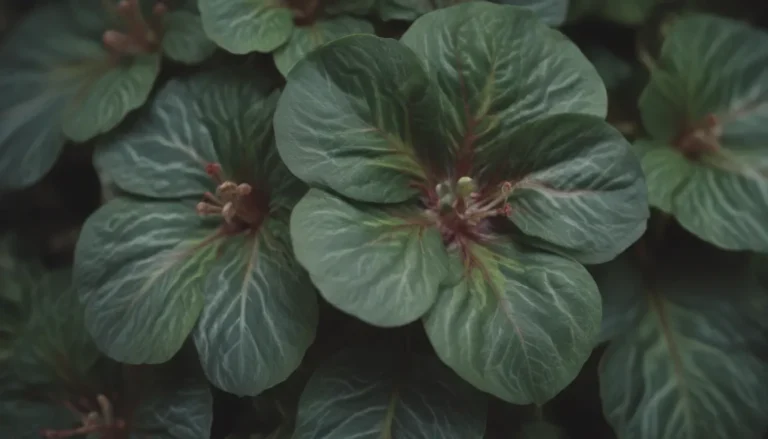How to Care for Your Philodendron ‘Prince of Orange’ Like a Pro

Philodendron ‘Prince of Orange’ is a unique and sought-after plant known for its vibrant orange leaves that transform to a deep green as they mature. If you’ve recently brought home this beauty and want to ensure it thrives in your care, you’ve come to the right place. In this comprehensive guide, we’ll walk you through everything you need to know to care for your Philodendron ‘Prince of Orange’ like a pro.
Philodendron ‘Prince of Orange’ Overview
Before we dive into the specifics of caring for your Philodendron ‘Prince of Orange’, let’s take a closer look at this stunning plant:
- Rare Upright Hybrid: The Philodendron ‘Prince of Orange’ is a non-vining upright hybrid bred from the Philodendron erubescens.
- Color Transformation: Young specimens of this plant exhibit vivid orange leaves that gradually turn to a deep green shade as they mature.
- Easy-to-Care-For: Philodendron ‘Prince of Orange’ is a popular choice for both beginners and experienced houseplant enthusiasts due to its low-maintenance nature.
Now, let’s jump into the essential care requirements for your Philodendron ‘Prince of Orange’.
Light
Providing the right amount of light is crucial for the health and coloration of your Philodendron ‘Prince of Orange’. Here are some key points to keep in mind:
- Brightness: Place your plant in a spot that receives bright but indirect light, mimicking the conditions of its native tropical habitat.
- Light Filtering: If you have a south-facing window, consider using a sheer curtain to filter the intensity of the sunlight.
- Rotation: Regularly rotate your plant to ensure all sides receive uniform light exposure.
Soil
Choosing the right soil mix is essential for the health of your Philodendron ‘Prince of Orange’. Here are some tips for creating the perfect soil blend:
- Drainage: Opt for a loose, well-draining potting medium to prevent waterlogging.
- DIY Mix: Create a custom mix using equal parts perlite, peat soil, and aerating orchid bark.
- Commercial Mix: Alternatively, you can purchase a ready-made aroid potting mix for convenience.
Water
Proper watering is key to keeping your Philodendron ‘Prince of Orange’ happy and healthy. Here’s what you need to know:
- Moisture Levels: Check the soil regularly and water deeply once the top few inches are dry.
- Avoid Overwatering: Be cautious not to overwater, as this can lead to root rot and pest issues.
- Seasonal Adjustments: Reduce watering frequency during the plant’s dormant period in fall and winter.
Temperature and Humidity
Creating a warm and humid environment is essential for the optimal growth of your Philodendron ‘Prince of Orange’. Here’s how you can ensure the right conditions:
- Humidity Levels: Aim for 50 to 70 percent humidity to mimic the plant’s native tropical habitat.
- Temperature Range: Keep your plant away from cold drafts and maintain daytime temperatures between 60 and 80 degrees Fahrenheit.
- Humidifying Options: Consider using a humidifier or placing a water-filled tray of pebbles near the plant to increase humidity levels.
Fertilizer
While Philodendron ‘Prince of Orange’ isn’t a heavy feeder, occasional fertilization can promote healthy growth. Here are some fertilization tips:
- Frequency: Apply a dilute, slow-release fertilizer every couple of months during the growing season.
- Balanced Formula: Use a balanced 10-10-10 fertilizer for optimal results.
- Organic Option: Consider using diluted fish emulsion as an organic alternative.
Pruning
Maintaining the bushy appearance of your Philodendron ‘Prince of Orange’ is simple with regular pruning. Here are some pruning tips to keep in mind:
- Dead Leaf Removal: Trim away any dead or unhealthy leaves to redirect the plant’s energy towards new growth.
- Minimal Pruning: Limit pruning to avoid unnecessary stress on the plant.
Propagating
While propagating patented hybrids like Philodendron ‘Prince of Orange’ is not recommended, there are plenty of other colorful plants you can propagate without infringing copyright laws. Explore different propagation methods for your collection.
Potting and Repotting
As a fast-growing plant, your Philodendron ‘Prince of Orange’ may outgrow its container over time. Here’s how to manage potting and repotting:
- Repotting Frequency: Repot every one to two years to prevent the plant from becoming root-bound.
- Pot Size: Opt for a pot that is one to two inches larger in diameter to accommodate the plant’s growth.
- Drainage: Ensure adequate drainage in the new pot to prevent waterlogging.
Common Pests and Plant Diseases
While Philodendron ‘Prince of Orange’ is relatively pest and disease-resistant, it’s essential to watch out for common issues. Here are some pests and diseases to be aware of:
- Fungus Gnats: Keep an eye out for these pests, especially in high-humidity conditions.
- Mealybugs and Thrips: Use neem oil or insecticidal soap to combat these pests if necessary.
- Preventative Measures: Maintain good hygiene practices to minimize the risk of infestations.
Common Problems
Even low-maintenance plants like Philodendron ‘Prince of Orange’ can face issues if not cared for properly. Here are some common problems to watch out for:
- Yellow Leaves: Monitor leaf color for signs of overwatering, underwatering, or insufficient light.
- Curling Leaves: Address curling leaves by adjusting humidity levels, temperature, or watering frequency.
- Brown Tips: Prevent brown tips by adjusting watering habits, light exposure, or humidity levels.
In conclusion, Philodendron ‘Prince of Orange’ is a unique and stunning addition to any indoor plant collection. By following the care tips outlined in this guide, you can ensure your plant thrives and showcases its vibrant foliage to its full potential. Remember to monitor your plant regularly, provide the right conditions, and enjoy watching it grow and flourish in your home. Happy gardening!





